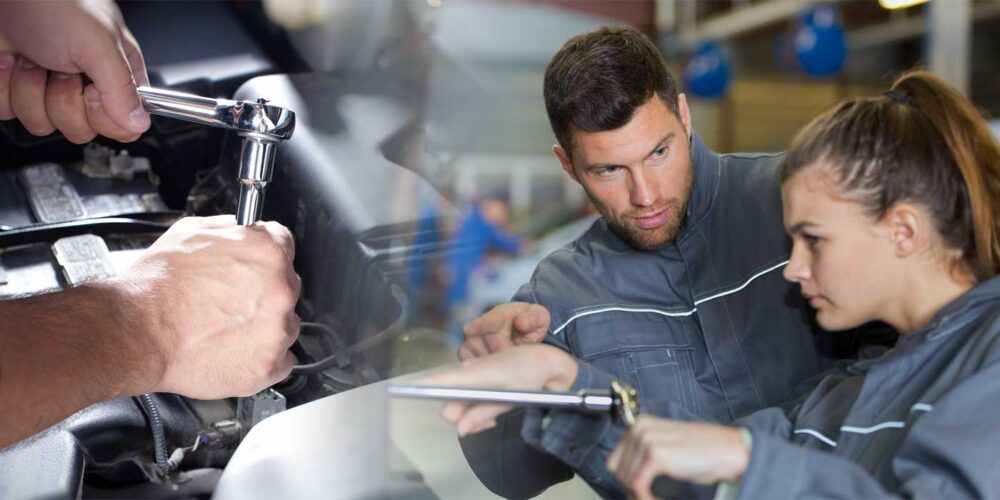One of the most common rifts in the dealer world exists between the parts department and the body shop. I have identified three main ingredients that can lead to a bad relationship:
1. Parts manager treats the body shop like a captive customer.
2. Body shop manager disregards the importance of excessive returned parts.
3. The accounting department fails to allocate a reasonable parts profit to the body shop statement.
Captive Customer
Many parts managers enjoy a less than congenial relationship with their body shop managers. It’s a little like a marriage gone bad and can be difficult to pinpoint the responsibility each party has in the demise of the relationship.
I am always amazed when a parts manager will bend over backward for an independent account yet treats his own in-house department like dirt. Anytime a manager in any department starts to act “entitled,” bad service usually is forthcoming.
The parts manager knows that the independent customer can buy parts anywhere he wants and his level of service shows it. He/she also knows that the dealer expects the body shop to order parts internally and hence acts as if he is “entitled” to the business.
What the parts manager fails to realize is that the body shop manager has tremendous latitude in the determination to repair versus replace. Since the body shop manager doesn’t want the hassle of dealing with his own parts department, he often makes the judgment to repair the part rather than replace it.
Our analysis indicates that dealership body shops have a sub-standard parts-to-total sale ratio or percentage. Good independent shops normally show 35-40% parts to total sales. Many dealer shops are as low as 30% parts to total sales. Some of the reason for less than stellar parts sales through the body shop is the negative dynamic between departments. The idea that the body shop is a captive customer is ludicrous. Message to the parts manager: the body shop can be your biggest, most profitable customer, but only if you treat them like a customer.
Excessive Returns
Parts returns can hurt profitability of any parts department. Every care must be taken by the parts staff to get the parts right the first time. Body shops traditionally do not supply enough specificity regarding parts description. Many parts managers lazily guess when a possible point of differentiation exists, and wrong parts are the result. The old-time body shop manager often lets the technician decide to repair a part even after a new one has been ordered. My advice is clear: Always install parts that are ordered for a job. Don’t let the proverbial tail wag the dog.
Once we have an opportunity to show the body shop manager the extreme profit benefits of increased parts intensity, they usually stop the practice of needlessly sending back parts once and for all.
The profit benefits of increased parts intensity are far ranging. The additional gross profit generated on the part itself is important (usually around $15 gross profit per actual hour). Additionally, increased parts intensity has a dramatic impact on paint and material cost and sales. New panels require a consumable material cost of approximately 50% of a repaired panel (less bondo, primer, sealer, sandpaper, masking supplies, etc.).
While cost control is good when replacing panels rather than repairing them, sales potential is also dramatically affected. The common way body shops are compensated for paint and materials is a multiplier based on refinish hours. New parts sales create additional refinish billable hours and hence more material compensation. The effect is exponential in that as material sales go up, costs go down.
Excessive returns can be eliminated by educating all parties as to how more parts sales allow everyone to make more money.
Stupid Accounting
The eggheads that recommend basic financial statement profiles are generally clueless regarding the real world of collision repair and its interaction with other departments. The dealer may reason that he/she doesn’t care where profit is distributed since it is all the same company. The problem with thinking like that is the failure to realize the discretion the body shop estimator/manager has in determining whether to repair or replace parts.
In most cases the body shop manager has an incentive program that is strictly labor driven. Hence, parts sales suffer because the incentives are short sighted. I’m always amazed that the parts department gladly sells parts at the wholesale level to your competition, then effectively charges your own body shop double.
I believe the dynamic between parts and body shop will never change until the accounting practices change. Without going into lots of math speak, I can assure you that the average body shop doing $1 million per year in total business will increase real gross profit more than $100,000 by simply allocating profit properly on the monthly statement and incenting the manager for parts sales. I recommend 75% of parts gross profit be allocated to the body shop and 25% to the parts department.
No matter what you do regarding statements and accounting, insist that your CFO, body shop and parts managers read this article. Call me if you need a referee.
Dave Dunn














